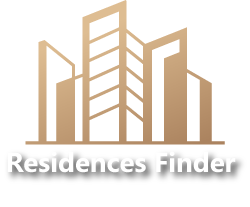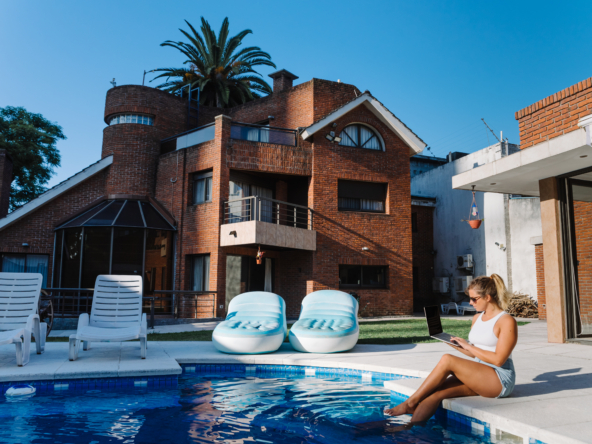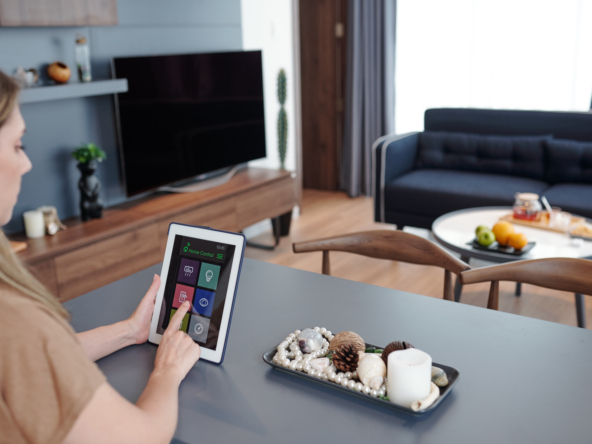It’s 2025, and sustainable and eco-friendly luxury homes are no longer rare unicorns in the real estate world—they’re leading the charge. High-end buyers are no longer satisfied with just marble countertops and rooftop pools. They want homes that not only look good but do good for the planet, too.
And it’s not just a “nice-to-have” anymore. More and more luxury homebuyers are actively seeking out homes that are smart, efficient, and built with sustainability in mind. Think solar-powered estates, smart home systems that minimize waste, and materials that are kinder to the Earth.
Let’s take a closer look at how these green-minded luxury homes are reshaping the real estate market in 2025—and why they’re here to stay.
Why Luxury Buyers Are Turning Green
Today’s luxury buyers want more than just a beautiful home—they want a purposeful one.
Take the case of a recent $5.4 million home sale in Boulder, Colorado. The property boasted geothermal heating, a full solar panel roof, reclaimed wood flooring, and smart windows that adjust tint based on sunlight. The buyer didn’t just fall in love with the mountain views. What really sealed the deal? The fact that the home ran almost entirely on renewable energy—and had zero energy bills.
This is the kind of story becoming more common in markets like California, Florida, New York, and even across Europe and Asia.
What Makes a Luxury Home “Eco-Friendly”?
Not every eco-luxury home looks the same, but most share a few common features that help reduce their environmental footprint without compromising comfort or style.
1. Energy Efficiency Is Standard
Forget drafty mansions. Today’s sustainable luxury homes use smart insulation, solar panels, energy-efficient appliances, and advanced HVAC systems to cut down on waste and utility costs. Some even go completely off-grid.
For example, a waterfront villa in Miami now uses Tesla Powerwall batteries to store solar energy, running entirely independent of the city’s power grid. It’s eco-friendly—and hurricane-resilient.
2. Smart Technology Meets Green Living
Smart thermostats. Automated blinds. Voice-activated lighting that turns off when you leave the room. In 2025, tech and sustainability go hand in hand. These aren’t just cool gadgets—they’re powerful tools for reducing energy waste.
Luxury developments like The Edge in Amsterdam are leading the way. Often dubbed “the smartest building in the world,” it uses over 30,000 sensors to monitor light, motion, humidity, and temperature, adjusting everything in real-time to optimize efficiency.
3. Sustainable Materials Are in Demand
Buyers are paying closer attention to what their homes are made of. Bamboo flooring, reclaimed wood, recycled steel, and low-VOC (volatile organic compound) paints are all top choices in today’s market.
Take the Green Spire Residences in Vancouver: every unit is constructed with locally sourced stone, recycled glass countertops, and eco-conscious insulation made from denim scraps. It’s luxury that feels good in every way.
4. Water Conservation Is Key
Especially in drought-prone regions, luxury homes are going all-in on water-saving tech. Think rainwater harvesting systems, greywater recycling, drought-resistant landscaping, and low-flow fixtures.
An estate in Scottsdale, Arizona uses a landscape design with native desert plants that require little irrigation, cutting water usage by over 50% compared to traditional lawns—all while looking stunning.
The Rise of Eco-Luxury Communities
Sustainable living isn’t just happening one house at a time—it’s spreading across entire communities.
In California, Rancho Mission Viejo is developing neighborhoods where homes are built to exacting environmental standards. They offer electric vehicle charging, community solar power, and walking trails designed to reduce car dependence.
Meanwhile, Costa Palmas in Baja, Mexico, combines beachfront luxury with environmental stewardship—replanting mangroves, using solar energy, and building homes that respect the local ecosystem.
These communities are proving that green living doesn’t mean giving up luxury—it’s about enhancing it.
Why It Makes Financial Sense
Going green isn’t just about saving the planet—it’s also a smart investment.
1. Higher Resale Value
Eco-friendly homes tend to sell faster and for more money. Buyers are willing to pay a premium for homes that promise lower utility bills, better air quality, and future-proof technology.
2. Tax Incentives and Rebates
Many governments and cities offer financial perks for sustainable building. From federal tax credits for solar panels to local rebates for water-saving landscaping, these benefits can add up quickly.
3. Long-Term Savings
Energy-efficient homes reduce monthly bills. Over the course of a decade, these savings can be tens—or even hundreds—of thousands of dollars, especially in larger properties.
Design That Reflects the Environment
Luxury homes in 2025 are being designed to fit in with their surroundings, not fight them. Architects are taking cues from the land, climate, and even local culture.
For instance, homes in Sedona, Arizona use red rock facades and desert-friendly architecture to blend with the landscape. In the Swiss Alps, luxury chalets are being retrofitted with green roofs that provide insulation and reduce snow runoff.
This focus on harmony—not just opulence—is a major shift in the luxury market.
Challenges Still Exist
Despite their growing popularity, sustainable and eco-friendly luxury homes still face a few hurdles:
-
Higher Upfront Costs: Green materials and tech can cost more initially, even if they save money long term.
-
Availability: Depending on the region, eco-luxury listings may still be limited.
-
Buyer Education: Many potential buyers still don’t fully understand the benefits of green homes—or how to spot true sustainability from “greenwashing.”
That said, as awareness grows and technology gets cheaper, these challenges are starting to fade.
What Real Estate Agents Should Know in 2025
If you’re in real estate, now is the time to get fluent in green.
Buyers are asking more detailed questions about sustainability, energy ratings, and eco-certifications like LEED, WELL, and Passive House. Understanding these terms—and being able to point out the long-term value of eco-features—can make or break a deal.
Make sure your listings highlight things like:
-
Solar panels and storage
-
Energy certifications
-
Green building materials
-
Smart systems for energy and water efficiency
The more informed you are, the more trust you’ll earn with forward-thinking clients.
Final Thoughts
The future of luxury living is sustainable, intelligent, and deeply connected to the environment. In 2025, eco-friendly luxury homes are no longer a niche—they’re leading the industry forward.
Whether it’s a solar-powered estate in the mountains, a smart villa by the beach, or an entire green community, luxury buyers are proving that sustainability and sophistication go hand in hand.
If you’re thinking about buying, selling, or investing in high-end real estate, now’s the time to consider how going green can elevate your property’s value, appeal, and impact.




